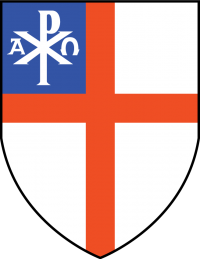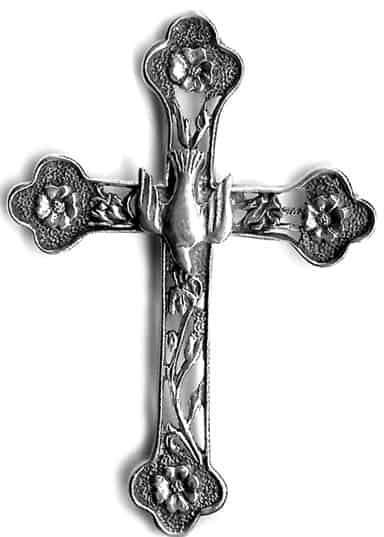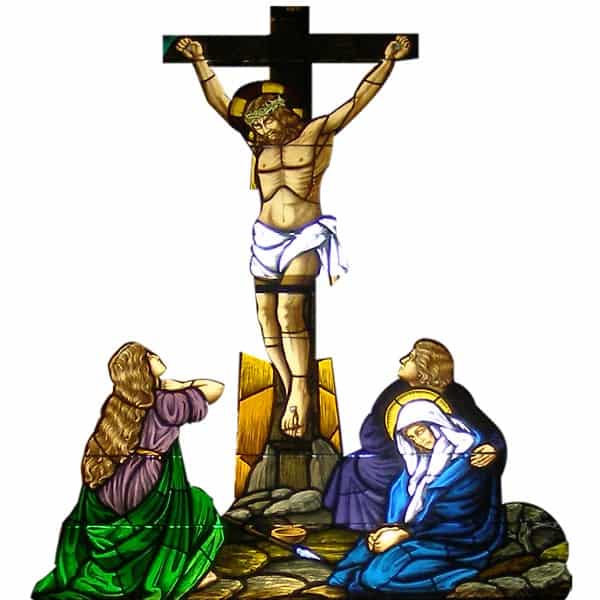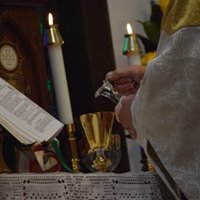A Deaconess (Biblical and Historic) in The Church
A DEACONESS IN OUR CHURCH? BIBLICAL & HISTORIC!
LAY MINISTRY A Brief History The recognized service of women as Deaconess in the Church dates from apostolic days. The term diakanos—literally “servant”—used both for Deacons and, in the early days, for Deaconesses, is applied by St. Paul, Romans 16:1 to “Phoebe, a diakanos in the church which is in Cenchraea.” Through the letters of St. Chrysostom, we know that forty Deaconesses were attached to the principal church of Constantinople about the year 400 A.D. There are other records of Deaconesses at Antioch and throughout the East, and evidences that the Office was well known in the Church by the 4th century. In the Middle Ages, the Office fell into disuse.
Because of the social reforms that occurred in the 19th century, a great need became apparent for such a ministry of women. The Bishop of London revived the lay Order in the Church of England in 1861 and in America by a canon of 1889 (PECUSA). In 1920, the Lambeth Conference urged its restoration throughout the Anglican Communion. During this period, Deaconesses led the way in missionary work, especially in America.
Unfortunately, the lay Order in America was dissolved into the Diaconate when, in 1976, the Episcopal Church approved the ordination of women to Holy Orders. In most traditional jurisdictions of the Anglican Communion however, the Deaconesses remained in the laity and continued to serve as valuable assistants alongside the clergy.
When several thousand traditional Anglicans met together at the landmark Congress of St. Louis in 1977 to object to the abandonment of apostolic order in the Episcopal Church, the issue of Deaconesses was addressed. At that meeting, a fundamental confessional charter, known as The Affirmation of St. Louis, which binds Continuing (Traditional) Anglicans worldwide, was adopted. Recognizing the continuing need for a specialized ministry of women, it declares as one of the “essential principles of evangelical Truth and apostolic Order: The ancient office and ministry of Deaconesses as a lay vocation for women, affirming the need for proper encouragement of that office.” Since that time, a number of women have been admitted to the Office in traditional Anglican jurisdictions.
APA Canon 22 officially recognizes the lay Order of Deaconess, along with requirements for candidacy and traditional duties.*(see below)
Are Deaconesses Ordained?
We are all “ordained” at our Confirmation to the “priesthood of all believers.” Persons admitted to an Order are further “ordained” or “ordered” to that particular Office. An Order is an ecclesiastically recognized Office, institution, or community usually requiring its members to take solemn vows upon admission and which has adopted a Rule of Life for its members to follow.
Deaconesses, being female, are not admitted to Holy Orders, that is, to the Office of Bishop, Priest, or Deacon. They can have no priestly function in the Church as is inherent to those Orders by the example prescribed in Holy Scripture.
To prevent confusion in this area, the Church of England entitled the rite used at the admission of women to the lay Order of Deaconesses “The Form and Manner of Making Deaconesses.” In the American church, the rite is entitled “The Form for Setting Apart of Deaconesses.”
Traditional Duties And Functions
- To assist in the work of the Parish, Mission, or institution to which she may be appointed, under the direction of the Rector or Priest-In-Charge; or, if there be none such, to perform such functions as may be directly entrusted to her by the Bishop.
- To care for the sick, the afflicted, and the poor.
- To give instruction in the Christian faith.
- Under the Rector or the Priest-In-Charge, to prepare candidates for Baptism and for Confirmation.
- Under the Rector or Priest-In-Charge, to organize, superintend, and carry out the Church’s work among women and children.
- To organize and carry on social work; and in colleges and schools to have a responsible part in the education of women and children, and to promote the welfare of women students.
Who Is She?
Traditionally recognized by her light blue jacket with its off-white accessories and unique cross, a Deaconess is a woman who has been called to lay ministry in the Church. She has been educated and trained to fulfill the duties of her vocation. She has dedicated herself to lifelong service in the Church and has been Set Apart to the Order of Deaconess by the solemn laying-on of hands by the Bishop. She has, in faith, vowed to prayerfully execute the duties of her Office in obedience to her Bishop and “those over her in the Lord.”
Requirements for candidacy are specified by Canon. Talk to your parish Priest
* Canon 22 Of Deaconesses
Section 1 A woman of devout character and proved fitness may be set apart to the lay order of Deaconess by any Bishop of this Church.
Section 2 The duty of a Deaconess is to assist the Minister in the care of the poor and sick, the religious training of the young and others, and the work of moral reformation, but shall not include the performance of any liturgical function as reserved to those in Holy Orders.
Section 3 No one shall be appointed Deaconess until she shall be at least twenty-three years of age; nor until she shall have laid before the Bishop testimonials certifying that she is a communicant of this Church in good standing, and that she possesses such characteristics as, in the judgment of the persons testifying, fit her for at least one of the duties above defined. The testimonial of fitness shall be signed by two Presbyters of this Church, and by twelve lay communicants of the same, six of whom shall be women. The Bishop shall also satisfy himself that the applicant has had an adequate preparation for her work, both technical and religious, which preparation shall have covered the period of two years.
Section 4 No Deaconess shall accept work in a Diocese without the express authority, in writing, of the Bishop of that
Diocese; nor shall she undertake work in a Parish without the like authority from the Rector of the Parish.
Section 5 When not connected with a Parish, the Deaconess shall be under the direct oversight of the Bishop of the Diocese in which she is canonically resident. A Deaconess may be transferred from one Diocese to another by Letters Testimonial.
Section 6 A Deaconess may at any time resign her office to the Ecclesiastical Authority of the Diocese in which she is at the time canonically resident, but she may not be suspended or removed from office except by the Bishop for cause, with the consent of the Standing Committee, and after a hearing before the Bishop and Standing Committee.
Section 7 No woman shall be recognized as a Deaconess until she has been set apart for to that office by an appropriate service, to be prescribed by the Diocesan Bishop.
AN ORDER FOR WOMEN;
PRAYER, ADMINISTRATOR, EDUCATOR, CATECHIST,
COUNSELOR, MISSIONARY, SOCIAL WORKER
Rev. 7/23/2012(7) ( (Original version by The Rev. Fr. Mark Clavier, All Saints’ Anglican Church, Mills River, NC)





